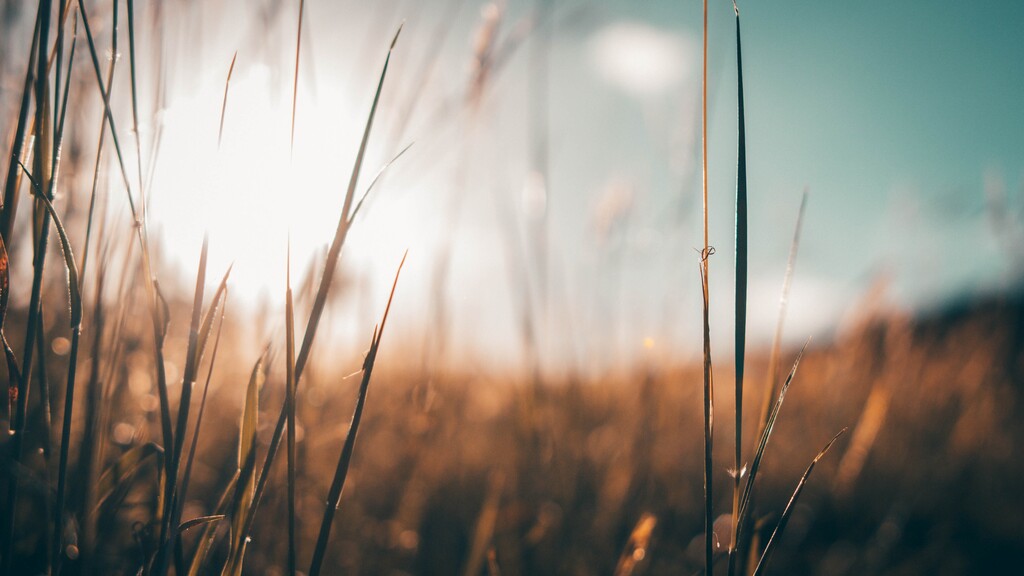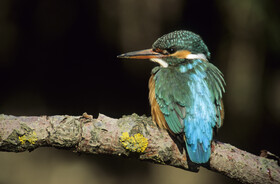

In January 2013 Naturefund bought and protected 15.980 m² of riparian forest along the river Leine in cooperation with IG Forest and NABU Obereichsfeld. The Leine's source is only 3 km away in Leinefelde. The strip of land on the shore belongs to the Beuren monastery and has been barely cultivated for centuries. Undisrupted, the narrow stream winds sinuously through the valley. A riparian forest with old trees, pools, sedges and reeds developed. For the rare kingfisher, the dipper and other animals, this strip of land is nature's paradise. Many thanks to all supporters! Yours Naturefund Team

Start: October 2012
End: January 2013
Next to the cloister Beuren at Leinefeld, Thuringia.
15.980 m²
The NABU Obereichsfeld and the Waldgenossenschaft IG Wald will protect the biotope in the long term.

In January 2013 Naturefund bought and protected 15.980 m² of riparian forest along the river Leine in cooperation with IG Forest and NABU Obereichsfeld. The Leine's source is only 3 km away in Leinefelde. The strip of land on the shore belongs to the Beuren monastery and has been barely cultivated for centuries. Undisrupted, the narrow stream winds sinuously through the valley. A riparian forest with old trees, pools, sedges and reeds developed. For the rare kingfisher, the dipper and other animals, this strip of land is nature's paradise.
Next to the Beuren monastery by Leinefelde, Thuringia;
15.980 m²
Kingfisher, Dipper, Green Woodpecker, Common Toad, Common Newt;
Common Bulrush, Sedge, Black Alder tree, Oak tree
The river Leine has its source in the town Leinefelde. For the first 3 km the straightened river passes meadows and garden plots. Past the Beuren monastery the look of the Leine changes abruptly. For 1,5 km the stream develops a natural dynamic in the flat valley plain. The meandering of the river corresponds to the geological charactistics of the ground. Due to the water's force, natural flood storage and flat sand- or rather mudbanks develop. In the inner curve of the river the flow of the water slows and sediment is deposited. A slip-off slope or 'point bar' develops.
The main current is directed along the slip-off slope to the outer bend, whereby undercut meander bluffs form. These are optimal breeding spots for the kingfisher, who can be seen regularly in the Leine riparian forest. The similarly rare dipper (cinclus cinclus) breeds here, too.
The riparian forest as well as the river-accompanying woods feature numerous so called „biotope-trees,“ which are characterised by a high level of deadwood, wood caves resulting from rot and woodpeckers' nesting holes.
The Middle Spotted Woodpecker (Dendrocopos medius) lives here. In the working forests of the county, dominated by the European beech tree, he's almost non-existent – the smooth surface of the beech bark is unsuited to provide nourishment for this particular woodpecker. Thus, the riparian forest at the Leine flood plains is of huge importance for the Middle Spotted Woodpecker in this region.
The areas of forest and bosk are closely interlocked with other biotopes typical for riparian forests. These can be traced back in their development to an earlier anthropogenic use.
The open areas of the Leine riparian forest provide a habitat for the Common Grasshopper Warbler (Locustella naevia), Marsh Warbler (Acrocephalus palustris) and Reed Bunting (Emberiza schoeniclus). The Water Rail (Rallus aquaticus) and the Corn Crake (Crex crex) have also been sighted here.
In spring, small bodies of water develop temporarily in the Leine riparian forest near an oxbow of the Leine between Beuren and Wingerode. These are used by Common Toad (Bufo bufo), Grass Frog (Rana temporaria) and Common Newt (Triturus vulgaris) for spawning.
In the 1980s people intended to meliorate the Leine in this area in order to use the surrounding land for agriculture. This was prevented thanks to the protests of the members of „Ornithologie und Vogelschutz Eichsfeld“ and many other environmentalists. Under GDR (German Democratic Republic)- law even a temporary protection of the Leine riparian forest between the Beuren monastery and the town Wingerode had been secured.
Thankfully, there have been no initiatives to drain the area ever since – even though the mentioned status of protection is no longer in force.
The NABU Obereichsfeld and the Waldgenossenschaft IG Wald will oversee and protect the biotope long-term.
Naturefund's aquisition of the riparian forest is an important step towards the conservation of the riparian forest biotope. The NABU- Obereichsfeld, whose members have considered the Leine riparian forest as one of the most precious biotope-complexes of the county for decades, will look after the area in the future. The Waldgenossenschaft IG Wald will support them in this endeavour.
There's a need for action in the prevention of dumping in the riparian forest. The town's residents litter in the forest and at times of flood the waste of the town Leinefelde is swept into the biotope. For this reason the NABU-Obereichsfeld e.V. will continue to carry out clean-up activities in the forest. By means of display boards and seminars they hope to inspire sensitivity and appreciation in the population for this natural paradise outside their front door.
Naturefund and the NABU Obereichsfeld will make sure that the river Leine continues to meander freely through the valley for generations to come.
Read here what others have written about the project.
Since 2011
Supports 1 project
Since 2013
Supports 1 project
Since 2012
Supports 2 projects